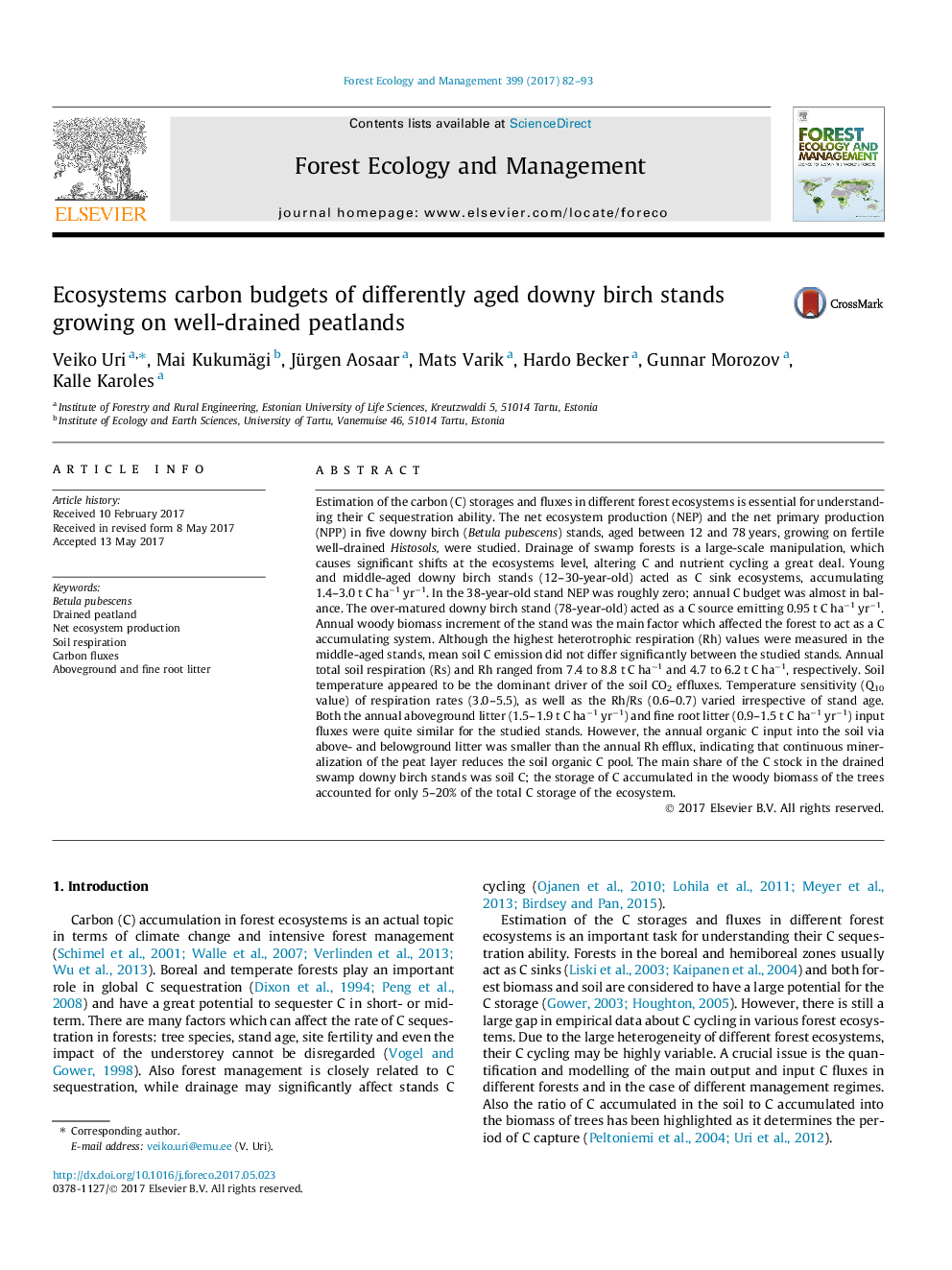| Article ID | Journal | Published Year | Pages | File Type |
|---|---|---|---|---|
| 4759370 | Forest Ecology and Management | 2017 | 12 Pages |
Abstract
Estimation of the carbon (C) storages and fluxes in different forest ecosystems is essential for understanding their C sequestration ability. The net ecosystem production (NEP) and the net primary production (NPP) in five downy birch (Betula pubescens) stands, aged between 12 and 78 years, growing on fertile well-drained Histosols, were studied. Drainage of swamp forests is a large-scale manipulation, which causes significant shifts at the ecosystems level, altering C and nutrient cycling a great deal. Young and middle-aged downy birch stands (12-30-year-old) acted as C sink ecosystems, accumulating 1.4-3.0 t C haâ1 yrâ1. In the 38-year-old stand NEP was roughly zero; annual C budget was almost in balance. The over-matured downy birch stand (78-year-old) acted as a C source emitting 0.95 t C haâ1 yrâ1. Annual woody biomass increment of the stand was the main factor which affected the forest to act as a C accumulating system. Although the highest heterotrophic respiration (Rh) values were measured in the middle-aged stands, mean soil C emission did not differ significantly between the studied stands. Annual total soil respiration (Rs) and Rh ranged from 7.4 to 8.8 t C haâ1 and 4.7 to 6.2 t C haâ1, respectively. Soil temperature appeared to be the dominant driver of the soil CO2 effluxes. Temperature sensitivity (Q10 value) of respiration rates (3.0-5.5), as well as the Rh/Rs (0.6-0.7) varied irrespective of stand age. Both the annual aboveground litter (1.5-1.9 t C haâ1 yrâ1) and fine root litter (0.9-1.5 t C haâ1 yrâ1) input fluxes were quite similar for the studied stands. However, the annual organic C input into the soil via above- and belowground litter was smaller than the annual Rh efflux, indicating that continuous mineralization of the peat layer reduces the soil organic C pool. The main share of the C stock in the drained swamp downy birch stands was soil C; the storage of C accumulated in the woody biomass of the trees accounted for only 5-20% of the total C storage of the ecosystem.
Related Topics
Life Sciences
Agricultural and Biological Sciences
Ecology, Evolution, Behavior and Systematics
Authors
Veiko Uri, Mai Kukumägi, Jürgen Aosaar, Mats Varik, Hardo Becker, Gunnar Morozov, Kalle Karoles,
